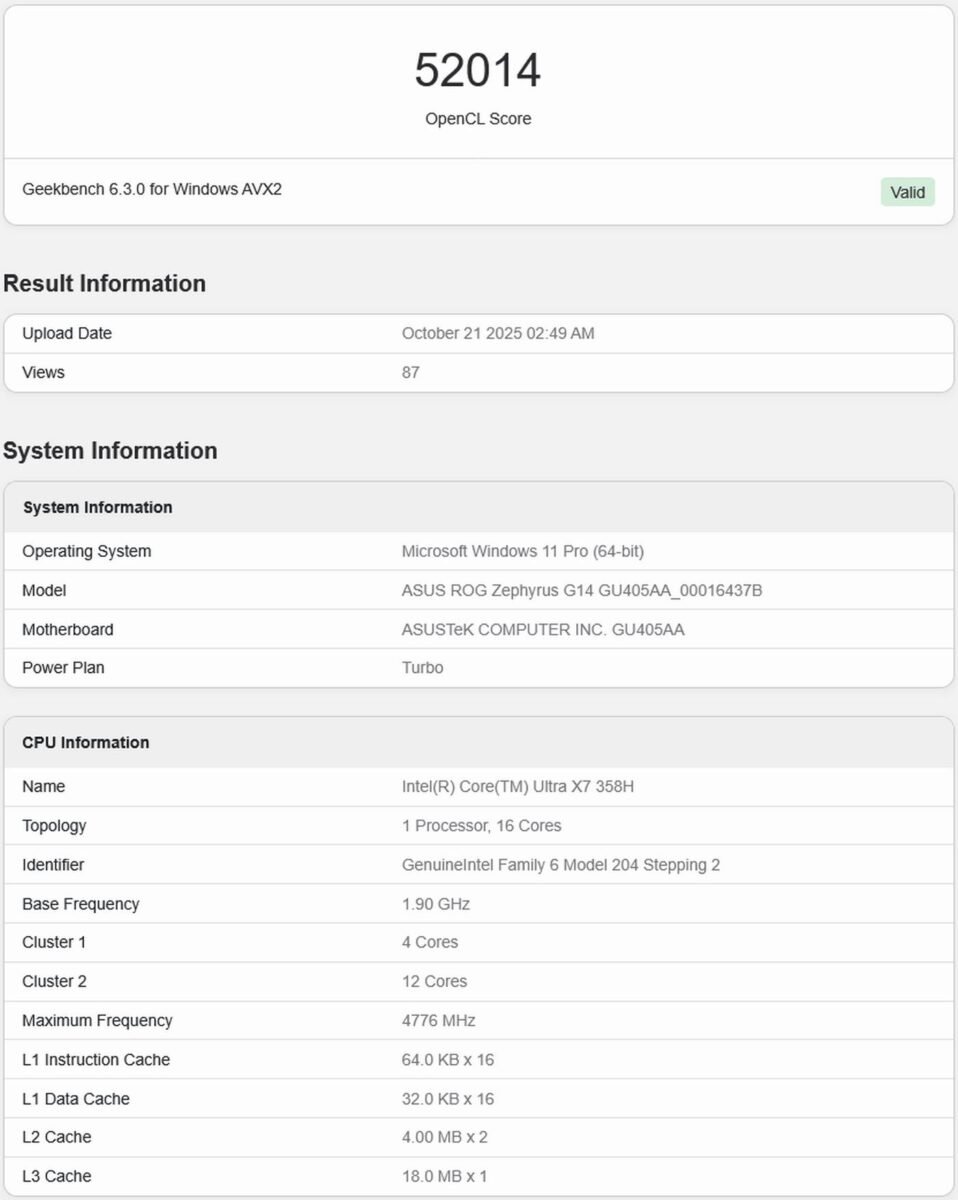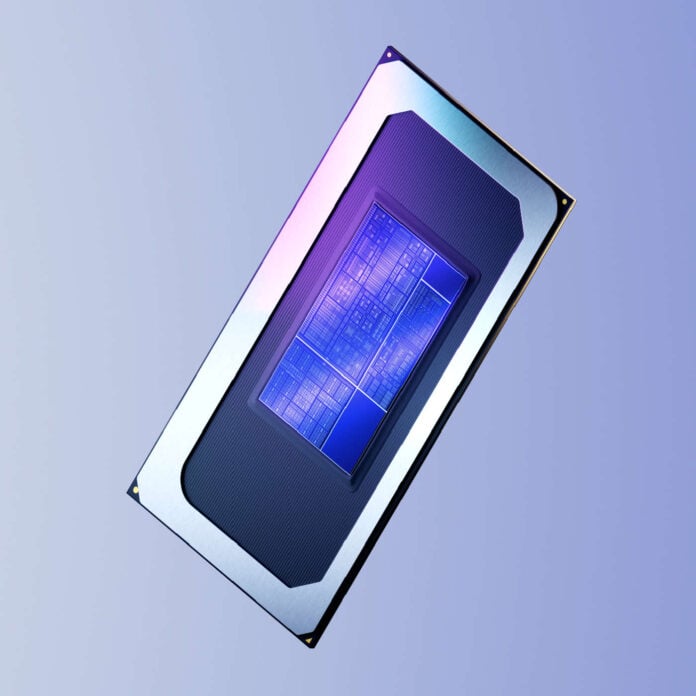Intel’s latest Core Ultra X7 358H CPU has been spotted in Geekbench’s database, giving us an early look at the Panther Lake series and its Xe3 iGPU. Built into an Asus ROG Zephyrus G14 laptop, this next-gen chip is much awaited as it debuts new CPU and GPU architectures alongside new semiconductor technologies manufactured using Intel’s 18A node. The leak also confirms some of the processor’s specs.
According to these test results, the Xe3 iGPU inside the Core Ultra X7 358H laptop processor delivered 52,014 points in the OpenCL benchmark. This puts it around the Nvidia RTX 3050 A mobile GPU, which manages around 54,000 points. Even comparing it to previous Intel iGPU leaves us puzzled, as it only beats Arrow Lake-H’s Arc 140T iGPU by about 25%. In fact, even the Arc A550M discrete GPU, which also features 16 cores of the first Xe architecture, is as fast.
Needless to say, this result is lower than what we would have expected, especially considering this is one of the high-end models in the Panther Lake series, packing the maximum 12 Xe3 GPU cores. As a reminder, Intel advertises up to a 50% GPU performance boost, albeit compared to the power-constrained Lunar Lake (Xe2).

That said, it is essential to note that this does not accurately represent the true gaming performance of Intel’s Xe3 iGPU. First, Geekbench’s OpenCL test measures the compute performance of the GPU, which can scale differently from the 3D graphics capabilities. Second, this chip could be an engineering sample, not running at the final specs and speeds. Lastly, the driver used may be old, lacking important optimisations. And besides, Intel isn’t known for its outstanding OpenCL support.
Performance aside, this leak also confirms certain specs of Intel’s upcoming series, including a 1.90GHz CPU base frequency, a 4,776MHz boost clock, and a 2.5GHz GPU clock. It also indicates that 16GB of system memory can be dedicated to the iGPU, which is great for gaming.
Intel is planning to begin shipments of Panther Lake processors later this year, with sales starting in January 2026. Only then we will find out whether the iGPU performance is any good. Logically, it should be at least better than previous Intel iGPUs.


